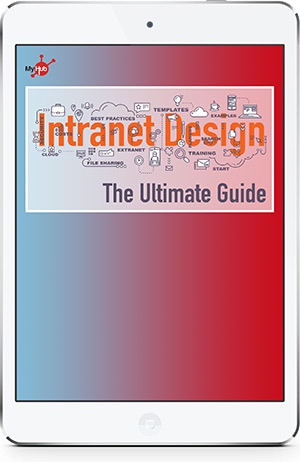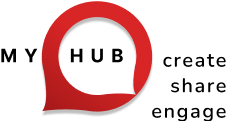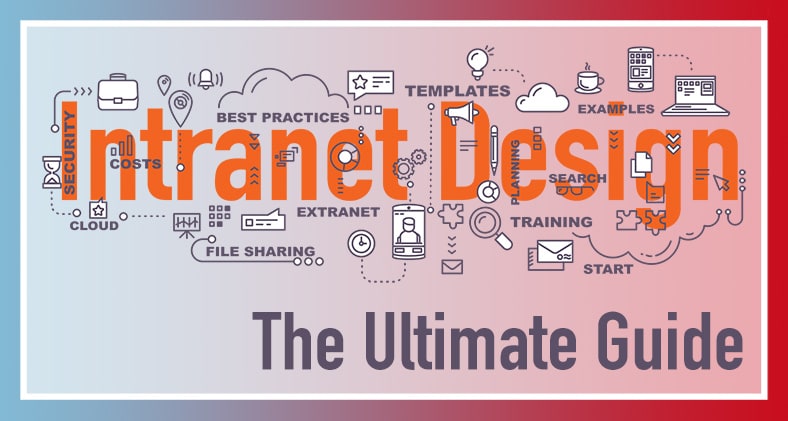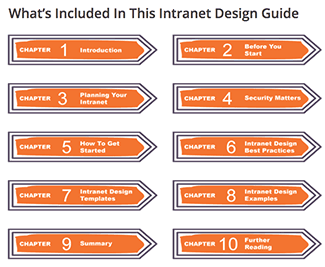Have you been charged with implementing an intranet in your company? Perhaps you’re a business owner who recognizes the value of an intranet, but because you’re not an IT person thinks it might be too difficult to set one up? Maybe you’re a busy executive with many demands on your time who knows an intranet is a good idea but has found that there’s just too much information out there, making it difficult to get started. If these scenarios ring true for you, then MyHub’s complete intranet design guide will be essential reading.
Difficulty In Getting Started?
Implementing an intranet can be a daunting prospect. First, you may have to convince the CEO or board that it is a good idea. 
How The Complete Intranet Design Guide Will Help
MyHub’s complete intranet design guide is here to help. For the first time and in one single guide we will take you through every step of the process involved in setting up a successful intranet. The guide provides advice, support and the benefit of our many years’ experience specializing in the field. In addition, the guide is written with the non-technical person in mind so it is jargon-free as well as being easy to follow and understand. It’s also concise and on point so you won’t be wasting your valuable time wading through a weighty resource. The guide aims to be a practical resource with the time-pressed manager very much in mind.

Simply put, the guide will help ensure your intranet is fit for purpose both in terms of the organizational issues it addresses and its design, usability and functionality. It will save you and your company valuable time and resources. And it will mean that your intranet implementation is a smooth and successful process.
Who The Guide Is Aimed At
The guide is aimed at anyone who is implementing or designing an intranet. It will be of relevance to executives and managers that are overseeing an implementation, as well as to staff members that are project managing and leading on the detail.
It will be useful to those companies that are introducing an intranet for the first time, as well as those that are revamping an existing one.
What’s more, the guide is particularly aimed at non-technical personnel. And so you will see that it is in fact possible to set up an intranet without any great technical know-how or an internal IT resource.
What The Guide Covers
The guide covers all aspects of setting up an intranet. From defining the various types of intranet and examining hosting options through to intranet design best practices and examples of successful intranets, the guide is full of practical tips and advice that will make the process much easier for you. Specifically, the guide covers the following key areas amongst a host of other useful advice:
different types of intranet
- hosting options
- costs involved in the launch
- how to plan your intranet
- organizational problems an intranet can help solve
- intranet security matters
- how to get started
- tips on intranet design best practice
- utilizing intranet design templates
- standard intranet features and must-haves
- good practice intranet examples.
How Do I Get Hold Of The Guide?
The guide is free to download from the MyHub website and by clicking here. What’s more, included in the guide is a handy reference section with links to other useful information and more detail on specific aspects of the intranet such as security, governance, how to create engaging content and performance management.
In addition, there are plenty of links to some of the wider issues relating to intranets such as how they can support employee engagement initiatives, improved internal communications and enhanced opportunities for joint working and collaboration across organizations. There’s plenty of food for thought there and you may well find some ideas on how you can maximize the value and the return on investment from your intranet.
Expert Help And Support
The guide has been written by the experts with the non-expert in mind. So download your copy today and begin the process of setting up a company intranet which will bring a range of business benefits to your company. And like many others before, you’ll soon find the intranet becomes an indispensable organizational tool.
Here at MyHub, we’re always happy to provide advice and assistance wherever possible and so please get in touch for an informal discussion about any aspect of the guide or indeed implementing an intranet generally. We’d love to hear from you.








0 Comments